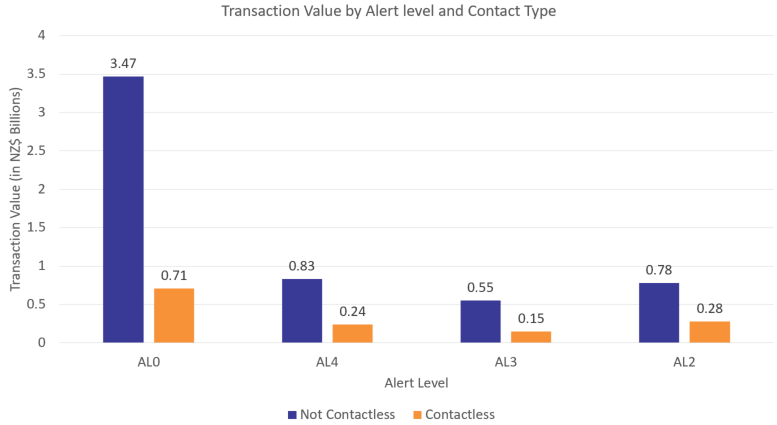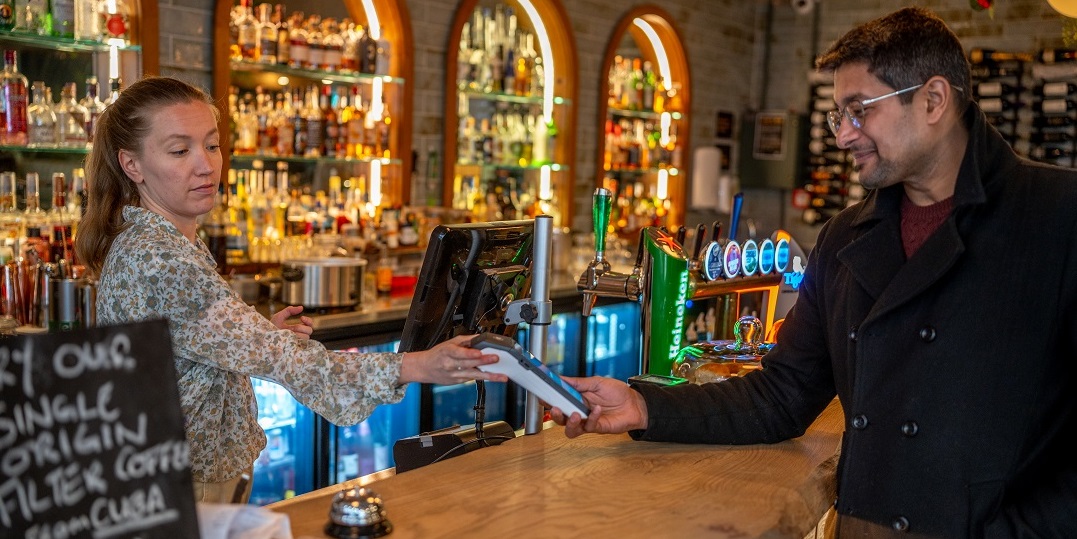.png?width=1200&name=Untitled%20design%20(77).png)
Throughout the lockdown period in New Zealand and onward as we descended through the COVID-19 alert levels, contactless payments (payWave and tap-and-go payments) have been at the forefront of the changing face of payment solutions in retail.
Prompted by the World Health Organisation, the New Zealand government stated clearly that businesses "must be contactless" at levels 4 and 3, urging customers to pay online, over the phone, or by contactless in-person, with delivery or pick-up services also required to be contactless.
Why? According to the WHO:
- We know that money changes hands frequently and can pick up all sorts of bacteria and viruses
- We would advise people to wash their hands after handling banknotes, and avoid touching their face
- When possible it would also be advisable to use contactless payments to reduce the risk of transmission
So how did COVID-19 effect contactless payments in New Zealand?
We've undertaken a deep dive into our terminal data to attempt to unpack how payments changed as a direct result of COVID-19, and glean some interesting insights!
EFTPOS NZ COVID-19 Contactless Payment Data Insights
We undertook a review of the data collected from all Eftpos New Zealand terminals active between January 2020, up until the transition to Level 2 in May 2020. Here’s what we found.

There were some noticeable trends:
- We begin to notice an increase in the percentage of contactless compared to non-contactless transactions from the moment the Prime Minister announced the COVID-19 Alert Levels.
- During a ‘normal month’ pre-COVID-19, contactless transactions made up around 16.9% of all EFTPOS terminal transactions across the country. Non-contactless transactions accounted for typically 83.1% of all EFTPOS NZ terminal transactions in New Zealand.
- At Alert Level 0 contactless payments represented 26.59% of all in-store payments and at Alert Level 2 contactless payments represented 37.47% of all in-store payments.
- At their peak, there was a 10.88% overall increase in contactless transactions from the month prior.
- Overall transactions pre-COVID-19 lockdown (January - March) are significantly higher than the following weeks while the country was at Alert Level 3 and 4 respectively. This drop in overall sales is to be expected, as many businesses who were not deemed essential closed.
- Naturally, the overall sales during Alert Level 3 & 4 were lower than the previous months, however there is a surge in sales in Alert Level 2 as the country begins to regain confidence in returning to ‘normality’. Our hypothesis for this surge, is the sheer number of businesses open in New Zealand as restrictions were lifted. At this point in time, New Zealand also experienced a drop in daily cases as well as clarity around what was expected from retailers in terms of contactless best practice, which likely increased customer confidence in making purchases.
The bottom line?
Once trading kicked off again at Alert Level 2, there was a noticeable increase in contactless transactions and a decrease in overall non-contactless payments compared to pre-COVID levels. Contactless payments peaked at 37.47% of all transactions on the Eftpos NZ network at Alert Level 2. Overall, there was a 10.88% increase in contactless transactions from the month prior.
The total revenue attributed to contactless transactions also increased by 9.33% in Alert Level 2, or a transaction value of $277,277,687 in revenue.
We believe these trends are underpinned by a sentiment shift among Kiwi consumers. Kiwis have transitioned from contactless payments being thought of as a 'convenient nice-to-have', to an essential and expected requirement. To some extent, contactless payments have become second nature to customers off the back of COVID-19. The once common 'no payWave' sticker on a dairy EFTPOS terminal is now jarringly inconvenient to customers.
To take a look at the full break down of the contactless payment numbers at each alert level stage in New Zealand, download the full Contactless Payment Whitepaper.
Human Error & Transaction Declines During Alert Level 4 Lockdown
The emergence of COVID-19 in New Zealand also highlighted the value of contactless transactions in terms of mitigating human error and transaction decline. During the Alert Level 4 lockdown, it was more pivotal than ever that transactions were accepted smoothly, with as little physical contact with surfaces as possible.
In some instances (such as supermarkets), EFTPOS cards were handed over the counter, operated by the shop assistant, wiped down and passed back - demonstrating the level of vigilance during the peak of the COVID-19 lockdown in NZ.
Through analysing our data set, we can see that historically contactless transactions accounted for 25% of all of the declines made, while representing 30% of all transactions made.
Through looking at the percentage of declined purchases by method, we're able to see that contactless transactions are underrepresented in terms of declines, showing us that contactless transactions have better accuracy than non-contactless payments. This makes sense because 'Incorrect PIN' is the most common reason for a declined transaction and for most contactless transactions, customers are not required to enter their PIN.

Insights we can learn from this data set:
- There are a number of reasons why the amount of non-contactless transaction declines are over-represented over this period, from terminal surface issues such as cleaning with excess fluid or using plastic films or plastic bags to cover the surface of the terminal, to sheer human error during a highly stressful time.
- Throughout this period, contactless payment declines were still underrepresented. This shows us that contactless payments definitively provide more certainty that a transaction will go through successfully the first time, reducing rates of contact with surfaces and speeding up the time customers spent at the checkout.
- As vendors, it’s important to make the checkout process is as seamless as possible during a pandemic where exposure is a risk and prioritisation of the safety of workers and customers is expected, showing the high value of contactless transactions during this time.
- In addition to this, customers are likely to change their mind about entering a store if they’re forced to wait in line and be exposed for longer periods. Lower decline rates can help reduce queuing, which can help improve a customers likelihood of entering any given store.
What have we learnt from COVID-19 Contactless Payment Data?
Contactless payments became the new ‘best practice’ for merchants in New Zealand during the COVID-19 lockdown. More and more businesses and industries are adopting contactless payments across the country, and if the general trend continues and research predictions are correct, contactless will eventually become the preferred payment type for merchants and customers alike.
What’s probably most important to note, is that while not all businesses have moved to contactless, we’ve observed an ideological shift from consumers who now expect contactless payment options as a part of ‘good service and safe practice’, as a direct result of the COVID-19 pandemic.
If you'd like a full breakdown of:
- 2019 contactless data across New Zealand
- The top towns in New Zealand where merchants make the most revenue through contactless payments
- The percentage of revenue for tourism regions such as Queenstown generated in 2019 through contactless payments
- The exact numbers of contactless transactions compared to non-contactless throughout all Alert Levels
Download our full Contactless Payments Whitepaper, below. It's completely FREE and yours to keep.







Comments